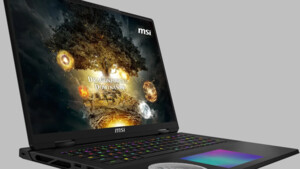Whether you call it Retina or ultra-high-res or something else entirely, the trend is clear: 1080p has been ousted. The Kirabook joins the MacBook Pro and the Chromebook Pixel as the best laptop displays on the market, with a 13.3-inch, 2560 x 1440 screen that looks absolutely fantastic. At 220 pixels per inch, it's right in line with the 15.4-inch screen on the Retina MacBook Pro. Colors are beautiful, viewing angles are solid, and things look unbelievably crisp in such high resolution. Except for the things that don't.
The Kirabook has the same problem Apple encountered with the first MacBook Pro with Retina Display: most Windows apps aren't designed to be seen at such high resolutions. Chrome is effectively unusable, for instance, and most apps don't render text or images properly. I laughed out loud the first time I tried to watch a full-screen YouTube video, and saw the hilariously tiny controls along the bottom of the screen.
Toshiba and Microsoft do everything they can to alleviate the problem: there's a handy tool on the Kirabook for tweaking the display's resolution so things look their best, and most Windows 8 apps look great at full resolution anyway. Most desktop apps look pretty bad, though, whether it's Evernote or Steam or Quicken — icons are too small, pictures too blurry, text too pixelated. I'm not sure they're going to be updated any time soon, either, given that the Kirabook is but one (very expensive) computer in the Windows ecosystem. A lot of websites have been improved as a result of high-res displays on MacBooks, iPads, and elsewhere, but a lot of the web still looks bad on screens this good. This screen is incredible, and watching Netflix on a Windows machine has never been so beautiful, but it shines a harsh light on how low-res Windows still is.
Unless you're willing to wait out a pretty steep development curve, you might want to wait a while before buying a Windows PC with such a high-res display. Not only are there aesthetic costs, but performance takes its toll as well.





